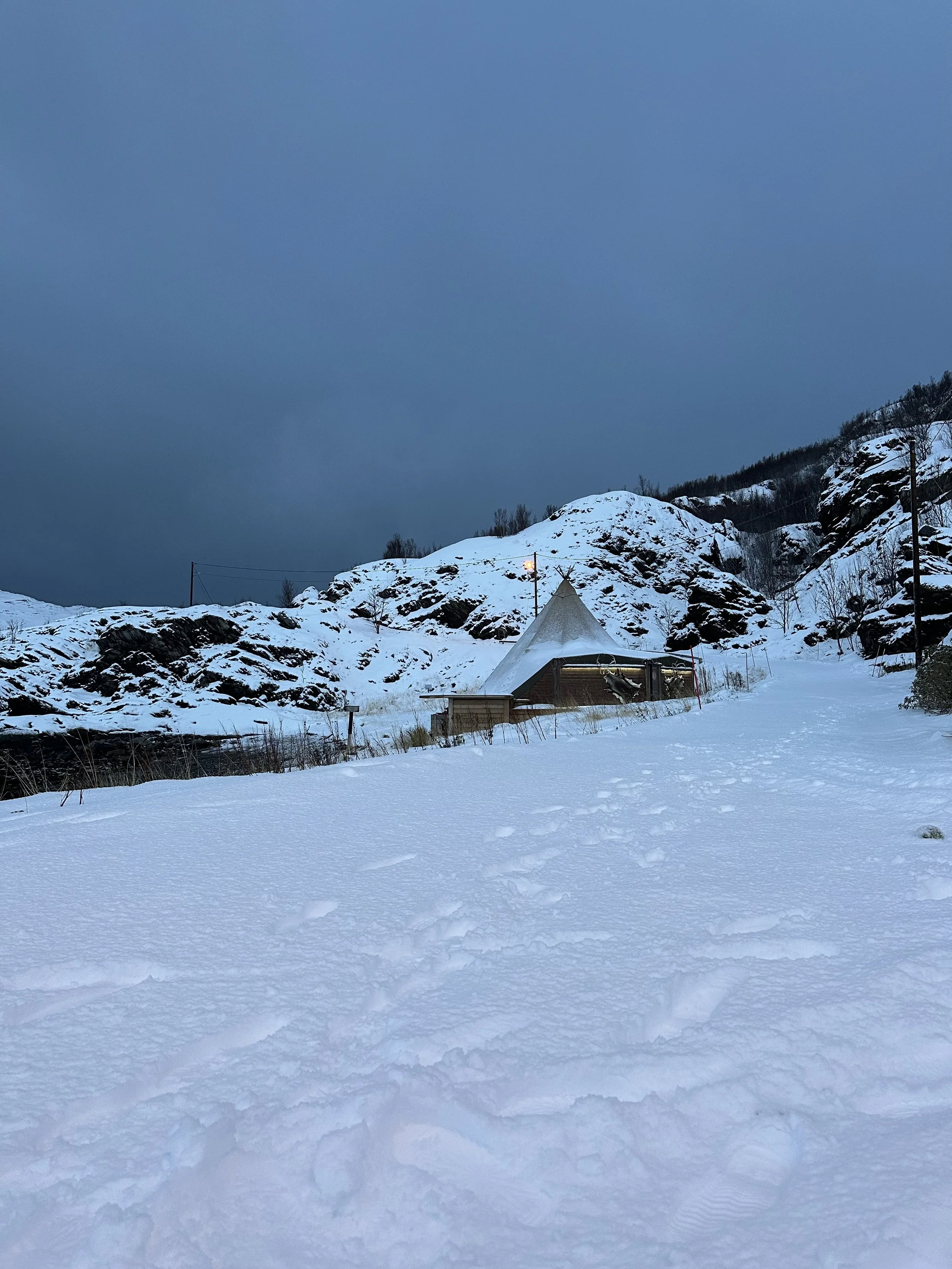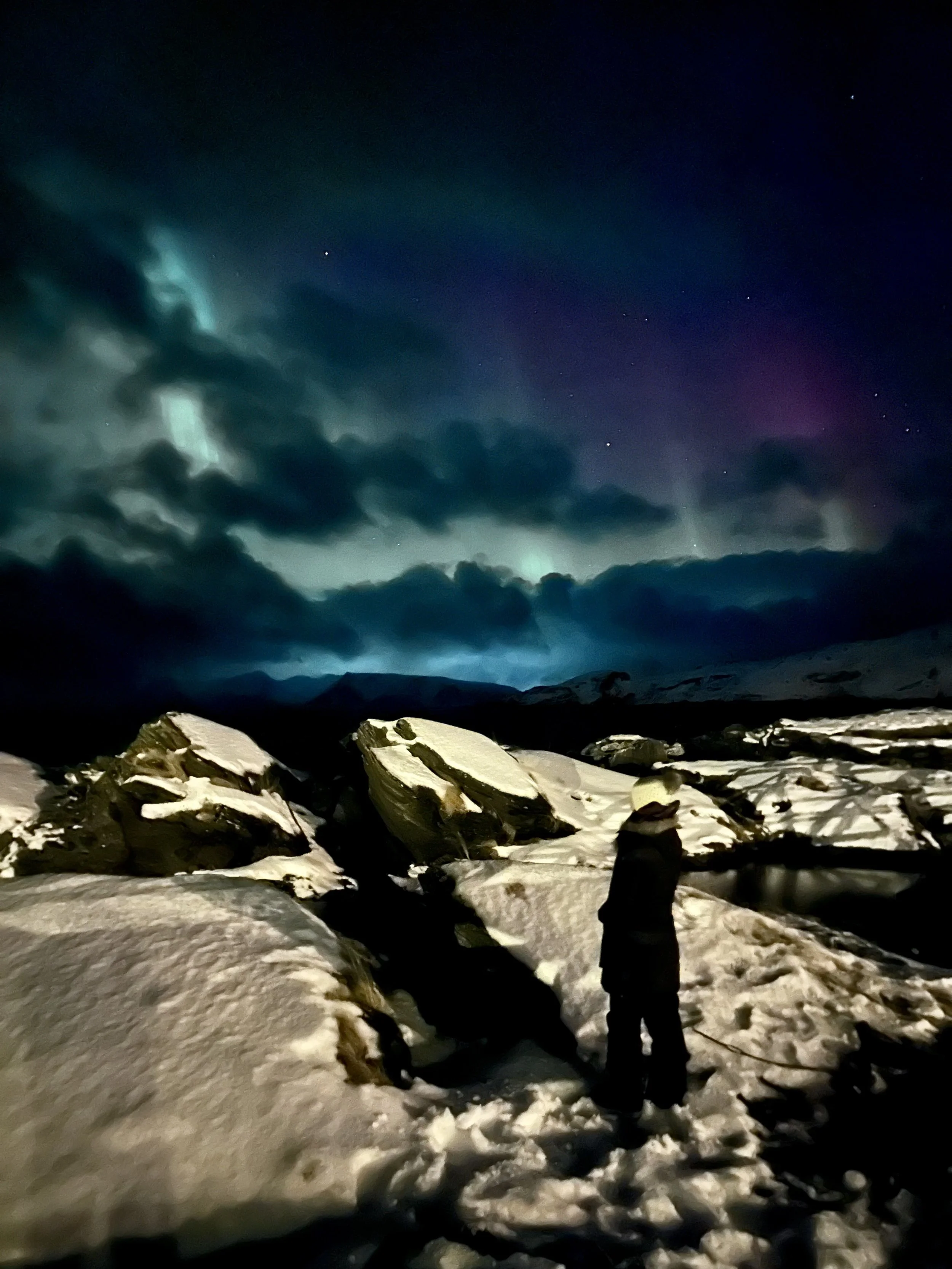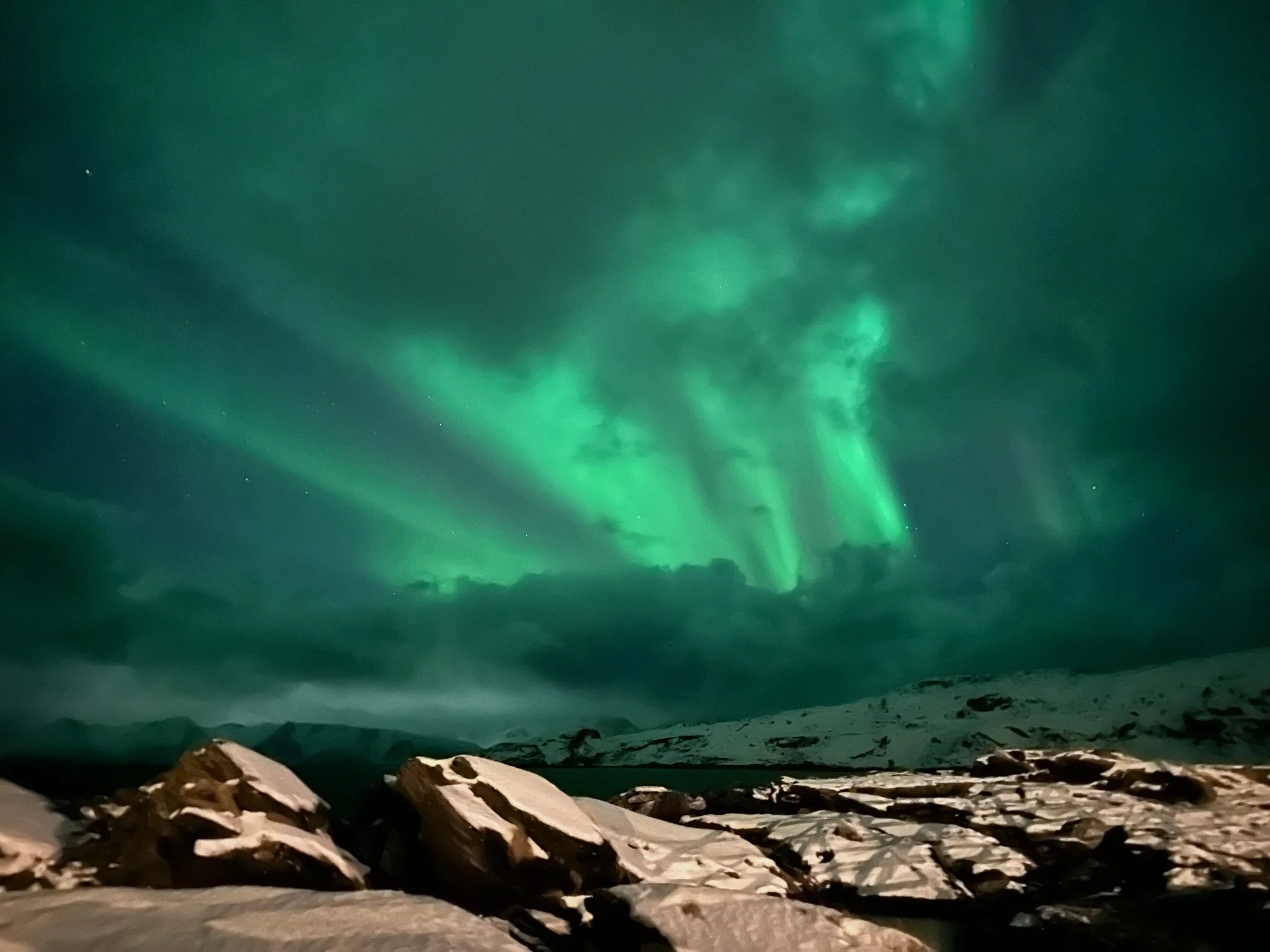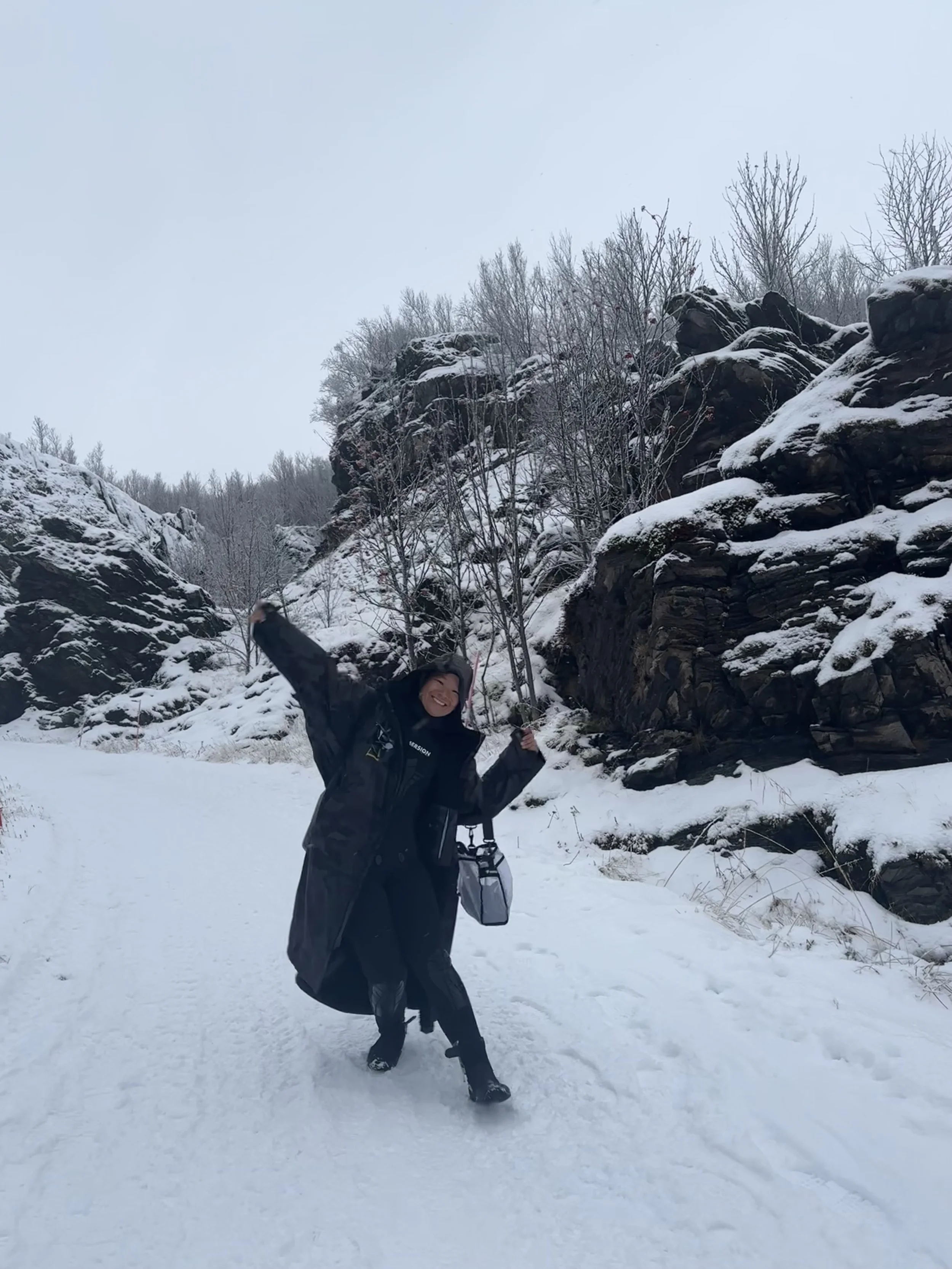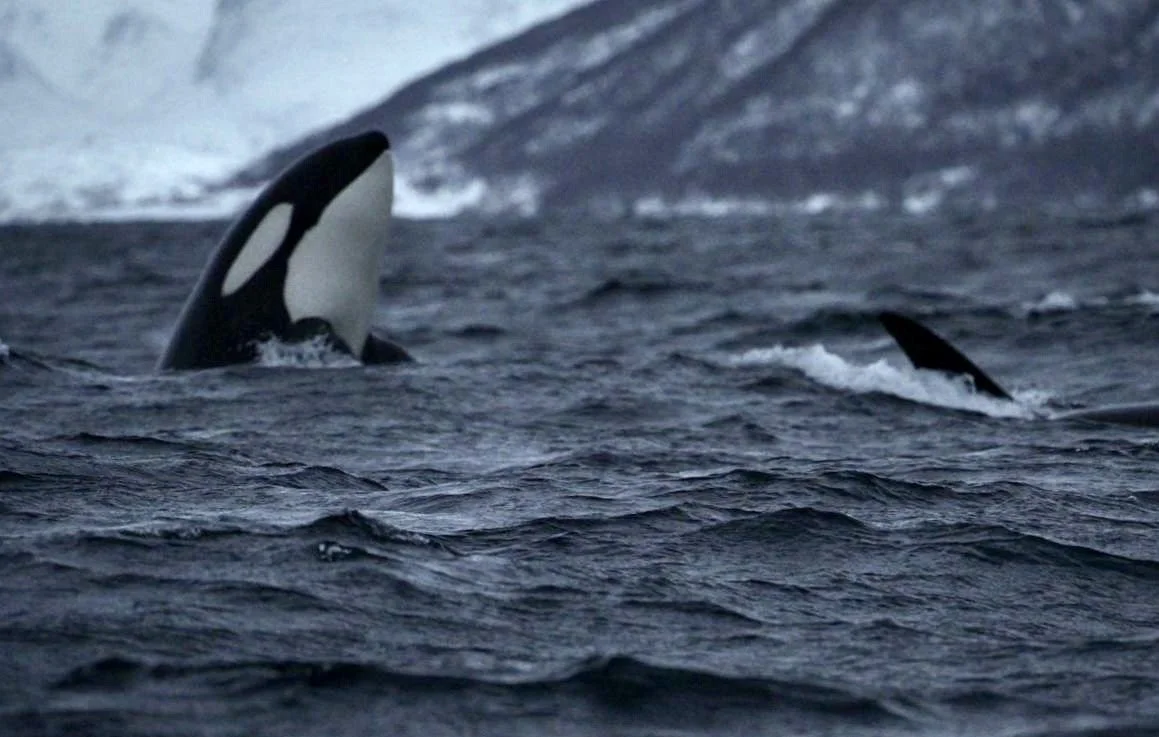How To Swim With Orcas in Norway
I went diving with Orcas in the Norwegian fjords in November. Many people messaged me when they saw the videos I posted of those adorable apex predators in the Arctic water. So I thought I’d write up a little guide for those who want to experience this incredible encounter for themselves.
Note: no affiliations in this article!
Some basic information first:
What did you see?
Orcas and humpbacks hunting herring baitball together!!!
We saw orcas everyday, humpbacks most of the days. But not always in the water. Some days it would be just on the surface, or a very quick (a few seconds) encounter in the water and it can be very dark.
Where was it?
The siting happened in the northern Norwegian fjords, near a tiny village called Seglvik. This is also our camp site where we stayed for the week-long expedition. It’s away from the big towns and you can see beautiful night sky with stars and northern light!
How much was it?
The 7 days&nights package was €4350 per person including accommodation on land, equipment rental, and meals. Though we did have to cut the expedition short due to a storm and had to pay extra for the additional accommodation in Tromso too. The total cost including flights from London, ferries in Norway, hotels and food during transit was about €5500.
Which tour operator did you go out with?
The tour operator I went with is called Valhalla, a French operator that has been doing this for several years. For detailed trip information and pricing please check their website. I have no collaboration or affiliation with them at the moment. Note that this is NOT a freediving tour. There are other operators out there catering for different needs with different setup, such as freediving, or snorkelling with dry suit, staying on a boat or on land.
When is the season?
Season is typically end of October to end of January. I went in November. I felt it was a good time because the days were longer than Dec or Jan. Although with wildlife activities and weather you can never know what would happen in advance.
What were the days like?
We got up for breakfast at 7:30. Then at 9:00 we got into our 10mm wetsuit and walked 5 min to the harbour and got on the boat when everyone’s ready. We looked for Orcas “all day” - but the days were short and the sun never rose much higher above the horizon. If we saw them, we may try to get in the water with them depending on their behaviour. The captain and guide would observe and instruct us. On most days we came back to the harbour around 15:00. Then the rest of the time would be resting, snacking, dinner and socialising.
There were 3 boats (Highfield RIBs) with 11 customers +1 guide + 1 captain on each boat, so lots of people around. Boats sometimes stay together sometimes separate on the day out. The benefit of having a group of around 40 people is that you get to meet some interesting people through the week you spend together. Also the fact that there are 3 boats out there looking for orcas means that there is higher chance of finding them as the captains talk to each other. The downside of large groups is that sometimes it can be tricky for wildlife encounters especially when some people have less water experience or don’t behave mindfully… So there are some tradeoffs, also financially.
Now more details…
How to Get There?
The destination is Seglvik. Valhalla is the only operator based there as far as I know. Most of the orca tour operators are based in Tromso or Skjervoy (both are my stopping points during transit).
The transit to Seglvik looks like this:
Flight London (or wherever)-Tromso
Bus/Taxi to Tromso centre (10min, ~€12 for bus)
Ferry Tromso-Skjervoy (3 hours, ~€50 one way)
Another ferry Skjervoy-Seglvik (1 hour, ~€15)
The ferry tickets can be purchased on the ferry after you board, and you can pay by card. You can also purchase them on an app call Svipper, and they are slightly cheaper on the app than paying on the boat.
When you arrive at Segvik, everything is within close walking distance. You’ll walk from the Seglvik harbour to the houses you’ll be staying at (3-10min).
Hotel in Tromso during transit: I had to stay a couple of nights in Tromso during transit. The city centre is very small and it’s best to stay near the ferry station (which is in the centre) so it’s more convenient. When it snows it could be VERY slippery to walk and a 5-min walk will be much further than it otherwise feels!
I stayed at 2 different hotels: Thon Hotel Polar (I rate it 10) was better than Comfort Hotel Xpress Tromso (I rate it 8). I booked same room type (Standard double) and paid similar prices, Polar gave me free check out at 2pm, free breakfast, a nicer room, provides shampoo, conditioner, body wash, and has kettle, coffee, and disposable slippers in the room. Xpress charged for EVERYTHING: early checkin, late checkout, toothbrush set, extra towel… it also had no breakfast, no kettle, no slippers, no floor towel, and only has 1 soap in the shower. Both are comfortable enough but Polar wins in details.
Also, side note, I learned that for the hotels with “free cancellation” rooms, Booking.com gives you 24 hours more than those on other sites (like Expedia) and it goes all the way to the day of checkin! This could be handy in case of travel disruption like flight or ferry cancellation due to bad weather.
Restaurants in Tromso during transit:
Lots of fancy / fine dining places. Not cheap but good food! I really liked the food in Mathallen Tromso, Bread and Wine Tromso, Bardus Bistro. Also had good coffee at Koseverden&Koselig Cafe and Bardus Bistro, and nice cocktails at No Stress. The popular reindeer sausage kiosk always had long queues when I passed by and on a desperate evening I did try one with their hot wine and they were good snacks (but I couldn’t tell it from any other sausage).
Equipment:
Valhalla provides: 10mm wetsuit, dry robe (very useful!), high viz orange hood, 5mm neoprene gloves, 5mm scuba boots, 1.5mm neoprene socks, scuba short fins, mask and snorkel, weights and belt. These are good reference if you are going to an expedition where you need to bring your own equipments.
If you want to freedive it might be useful to bring your own equipments as it’s going to be very challenging to dive with the ones Valhalla provided (eg 7mm suit + 3-7mm socks + long carbon fins would probably be my choice if I were to do a freediving version of this trip again). However, freediving might be tricky when you are with a non-freediving group, see below the Freediving section for more details.
Ski goggles might be useful especially when there is a snow storm (horizontal hard snow that is painful on the face and eyes) or lots of wave splashes, but since the light was quite dim you might not want a dark shade which makes it even darker to see. And be careful handling the equipments on the boats. Don’t mix the fragile ones with weights as they might get destroyed. A separate small mesh bag is handy for more fragile equipments such as mask, snorkel, GoPro, ski goggles (if using).
Dry bag is also useful if you want to bring things that you don’t want to get wet (eg. Camera, towel). Just remember you are in the Arctic and the sea conditions do get rough sometimes so depending on the weather there might be times when it’s difficult to handle a dry bag and keep everything absolutely dry from the waves, rain and snow.
What To Wear To Stay Warm?
For tours that swims or dives with orca, when it comes to packing for clothes, think of it as you will have wet days and dry days.
Wet days are when you go out on the boat and prepared to jump into the water, and dry days are days during transit, or days when you decided not to go out (e.g. go hiking instead), or that you’ll go on the boat but dressed to stay dry.
When you have a wet day, you are going to be cold on the boat, so be prepared mentally. Especially your extremities like hands and feet. We were given a 10mm open-cell freediving wetsuit (lined outside) and a dry robe to wear on the boat.
Side note: As a freediver, I am very familiar with and used to open cell wetsuit so I was very glad with the open-cell (because it’s warm and easy to put on with soap). For those that are not familiar with this type of wetsuit, you might want to check out a video tutorial <how to put on an open cell suit> to help you get in and out of the wetsuit. People definitely struggled with this. But you will get the hang of it with a little bit of practice!
Best way to stay warm on the boat is to MOVE! Dance and move! Also keep in mind that a lot of the coldness is in the mind! The more you focus on it and feel miserable, the more you will feel miserable! On Day 1 I was absolutely defeated, thinking that I would not go out for any of the remaining days. Then I felt a little bit stronger every day, literally! By day 3 I was wearing my own 1.5mm gloves (instead of the thick 5mm one they gave me) and was absolutely fine (I felt much more agile operating my camera with the 1.5mm gloves, and just AS cold as with the 5mm ones). And by day 4 I was regretting not bringing my carbon fins with 1.5mm or 3mm socks because I could definitely do some dives with them.
If I go for another trip with the Orcas, I’d like to have a feet version of the dry robe - something easy to put on and off on top of the boots / socks, and protect my feet from the wind and splashes/snow would be very helpful. Maybe I should design one? With waterproof fabric outside material and fleece inside, soft so it can be turned inside out to dry, with a semi soft sole? And maybe string or Velcro on the opening so it can be tightened easily? I digress…
On land or during a dry day, in the houses and buildings it’s usually reasonably warm. Although we do have a big tent in which we meet for dinner and socialise, and it’s not incredibly warm, though there is a fire in the middle of the tent. People wear between 1-2 layers indoors, and 3-5 layers outdoors depending on the building, the weather, and how resilient to cold the person is.
I personally figured out that if I went out for a short time, like a 5-20 min walk between buildings, I don’t usually get cold with 3-4 layers (a thin or thick thermo layer, a normal long sleeve, a down jacket, and sometimes a rain proof shell; thermo leggings, normal trousers). Hat and scarf optional. But if I go out for a while and not moving much (eg. watching the stars or northern light) I usually need to add a few more layers (thick thermo, fleece, vest, thin down jacket; thick ski pants) and definitely hats and gloves. Hands can get really cold if you’re taking photos or need to handle things, so thin gloves and hand warmers are super handy. I brought a whole bunch of hand and feet warms with me but hardly used them (as I was out on the water all of the days and they don’t work once they get wet).
Freediving:
Freediving in the Arctic water is already a challenge by itself due to the cold water and thick wetsuit you’re wearing, which also means you need to wear heavy weights to compensate for the wetsuit. But it’s not the biggest problem when diving with Orcas -
When you are doing an orca encounter with a large group (12 people) who are not freedivers, freediving is very much discouraged because you might scare away the animals and “you don’t want to be the one that f*ck it up for everybody else” as our guide said during the briefing. From what I’ve learned, if you’re with a big group (of non freedivers), the best chance to freedive is when the orcas are feeding on bait balls. This is when they are busy minding their own business and don’t really care what you do, and also stay around enough so that you might have a chance to dive with them. In the other types of encounters such as “passage” or “rush feeding” or “resting”, the orcas are usually passing you by quickly and so this is when you want to be mindful and make as little splash as possible so that everyone has the best chance of seeing them passing by. If you’re lucky they might even turn around to come check you out. We did have an individual that was not very mindful in the group and freedived against advice, and not only ruined it for other people several times but also got into a shouting match with our captain… Not setting a great example and reputation for freedivers ;(
For me personally, this was a good experience, but I would probably look to do a freediving trip specifically catered to freedivers if I were to do it again. It took a lot of discipline and I was dying a little bit inside to stop myself from attempting to freedive with them. I know that a few people in the freediving community are organising their own trips with private groups and boat chartering which might be an interesting thing to investigate. I’d also get a custom 7mm wetsuit from Elios so that it’s warm and fits better and easier to dive. But for now, that’s enough cold water for me and I am happy to be back in the warm waters in the sunny Caribbean for the rest of this winter!
My Arctic pack list:
Thermal layers
Uniqlo heattech thick, middle, thin high neck, think low neck
merino wool under layers (I didn’t end up using these since I was in water every day)
Middle layers (fleece, vest, sweater, thin down jacket)
Outer layer (thick ski pants, thick down jacket)
Shell (waterproof pants, jacket)
Hat, scarf, gloves, wool socks
Waterproof snow boots
Hand and feet warmers
There is no need to pack a lot, you usually wear the same and only during evenings.
For cold water
neoprene socks
Ski goggles for waves/snow
Waterproof bag
bikini and swimming cap for under the wetsuit
Optional (I brought): Mesh bag, mask, snorkel, thermal water bottle for hot drinks, small towel for the boat, Ear plugs for shared accommodation
Photography
Camera and lens
GoPro
Drone
Other:
Snacks (Protein bars, beef jerky, short bread…) - there is no shop in the village!!!
Sea sickness tablet
Since the operator provided most of the diving equipment, I travelled “light” this time. If you’re interested to see my usual freediving pack list, check out: My Freediving Equipment Pack List.
Some other things to do in and near Tromso:
Sauna and Arctic Plunge on an old fishing boat!
Walk over the Tromsøbrua (Tromso bridge) and check out the Arctic cathedral.
Reindeer tour, Husky Puppy tour, cable car, fjord tour… there’s of course the northern light tour as well.
That’s it! I probably forgot something so if you have any further questions please let me know and I’ll try to answer them.

